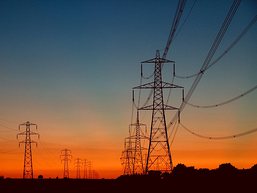How do we recover?
As a lifelong New Yorker, I had been very comfortable with the concept that disasters happened elsewhere. Hurricanes, for example, hit Florida and sometimes the Gulf Coast. Forest fires were largely confined to the west. California got mudslides and serious earthquakes.
New York City and its suburbs could be seen as immune, particularly after it so easily shrugged off the 1993 attack on the World Trade Center. Sure, low lying parts of New Jersey would flood pretty frequently; but mostly we faced the occasional blizzard, which would shut the city for a day or two and cause people to look forward to spring.
Well, have I been disabused of that particular notion, as I suppose many New Yorkers have. First, we saw that terrorist attacks can disrupt mission-critical operations. Not long after, in 2003, a major utility outage, demonstrated weakness in the electrical infrastructure. And then, in 2011, Hurricane Irene brushed by New York City and destroyed communities in upstate New York, Vermont, and elsewhere in the region. And then, just last month, New York City found itself directly targeted by Superstorm Sandy.
 After each incident, the industry, politicians, and others sought to re-establish operations and begin to draw lessons from the damage. Many of our mission-critical facilities will change operations as a result of their experience with Sandy. Others will not.
After each incident, the industry, politicians, and others sought to re-establish operations and begin to draw lessons from the damage. Many of our mission-critical facilities will change operations as a result of their experience with Sandy. Others will not.
Still, at this time of year, my thoughts go out to the victims. New Orleans, while not a hub of mission-critical operations, revealed how vulnerable we become when the critical infrastructure fails. With the passage of time, we forget that much of that city has not been rebuilt; we forget about the human cost of the mass dislocation.
Hurricane Irene remains very fresh in the minds of my neighbors, perhaps because some roads remain closed and local towns have not yet recovered, even as Sandy took the spotlight and focused it on New York City. But has even the damage caused by that storm begun to fade in memory for those of us who were not directly affected by it? Perhaps even some of those who fared okay because they lost power for only a few days or a week have put the disaster behind them.
It would be hard to blame them, after all the gas lines are gone. Storm victims seem to get less media attention. Most mission critical infrastructure has been repaired.
Yet, it would be good to remember that much of Staten Island, parts of Brooklyn and Queens, and much of the New Jersey shore may take years or more to recover, just as New Orleans and many Catskill Mountain towns have yet to be rebuilt. At this time of year, forgetting is not an option.



